Yesterday, Barry Stewart and I traveled to the southwest corner of Arizona to scout some locations for another Milky Way photo shoot. The primary consideration for this area is its darkness. It’s remote, distant from the large light sources (Phoenix and Tucson) and there are not many communities on the Mexico side of the nearby border. Visibility of the night sky, particularly the Milky Way can be severely comprised by light pollution. One of our candidate locations was the Organ Pipe Cactus National Monument, located 125 miles southwest of Phoenix.
In the course of checking out this location we did some daytime photography. It is a spectacularly scenic area and deserving of its recognition as a national monument. We spent most of our time on the east side of the park, following the Ajo Mountain Drive, a 21 mile (34 km) loop. This was productive time. In addition to getting some good photographs, we discovered a promising location for shooting the Milky Way.
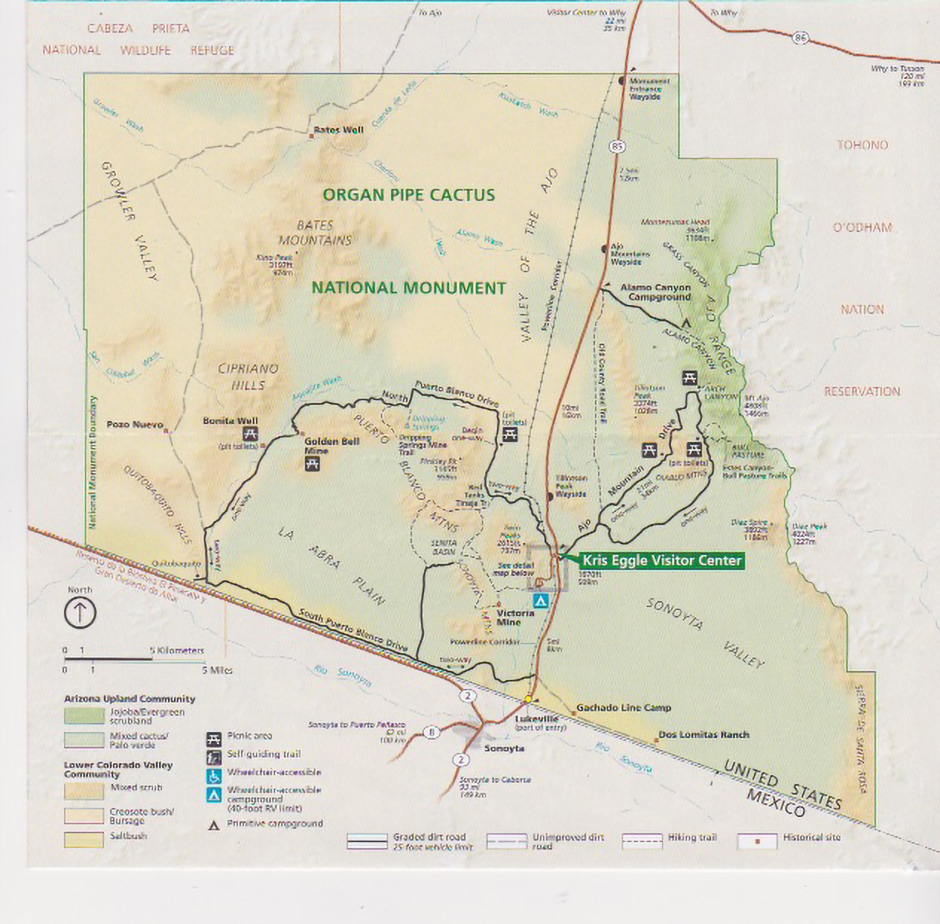
Before beginning our loop around the Ajo Mountain Drive, we explored the circuit on the west side of the park. We could only go a short way before turning around. The remaining part of the loop required a high clearance vehicle to travel it safely. I did get this pleasing shot of Kino Peak from the Puerto Blanco Drive. You can see that spring is coming soon to the desert, evidenced by the profusion of wildflowers.

We quickly got into the mountains as we set out on the Ajo Mountain Drive. This first scene includes a Teddy Bear Cholla cactus, backgrounded by the Ajo Mountain Range.
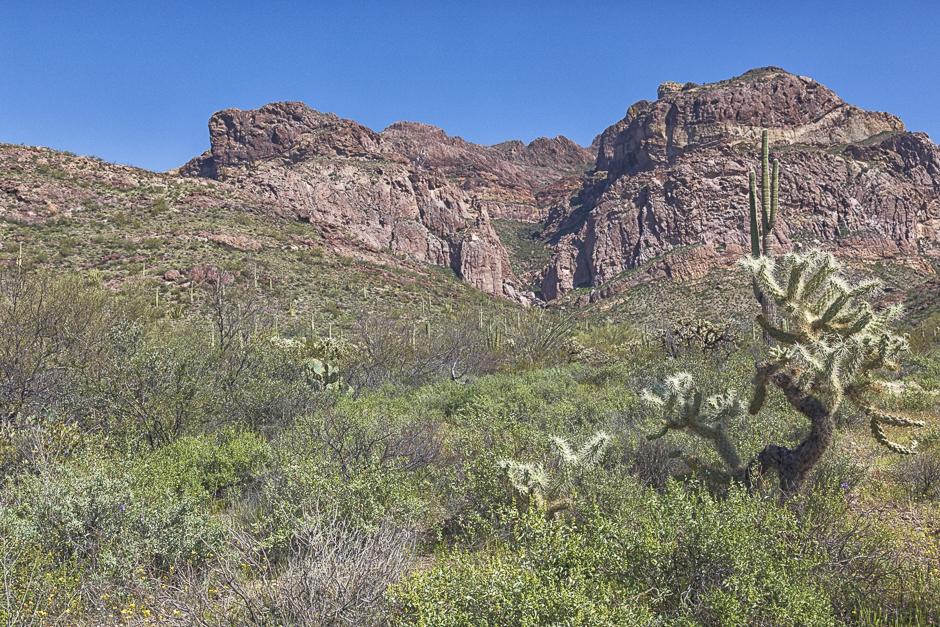
The park’s namesake became very evident in this area. This is a beautiful example of the Organ Pipe cactus.
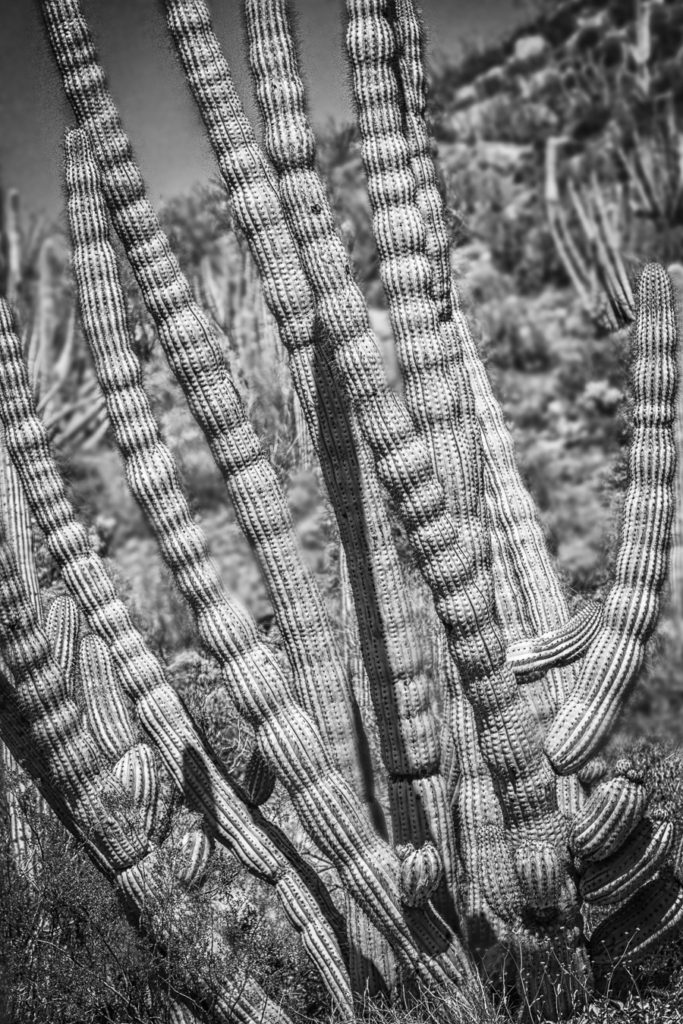
I think this is one of the more interesting rock formations I’ve seen. It forms the eastern side of the Arch Canyon, behind it. The opening below the arch makes me think of a peephole into the canyon. (We didn’t go up for a look).
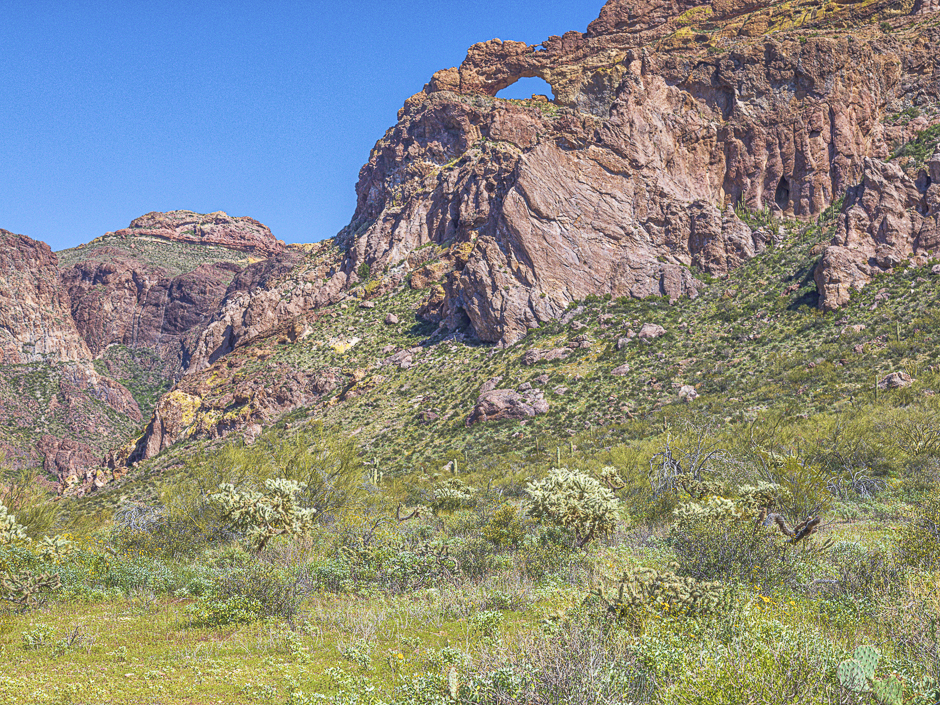
For a sense of the enormity of this formation, I’ve included a close-up from the photograph above. If you look at the far right side of the picture, about two thirds of the way up you’ll observe a copse of Saguaro cacti nestled against the rock face. A mature Saguaro, typically 30-40 ft (9-12 metres) in height is dwarfed by the surrounding rock.
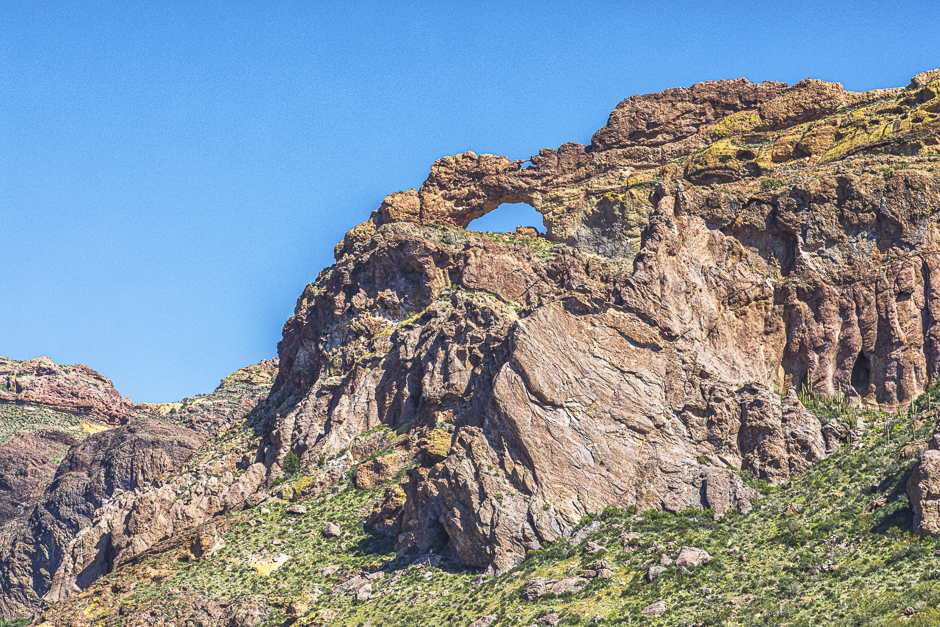
Amid a sea of wildflowers, I spotted a few blooms of the colourful, Mexican Poppy.
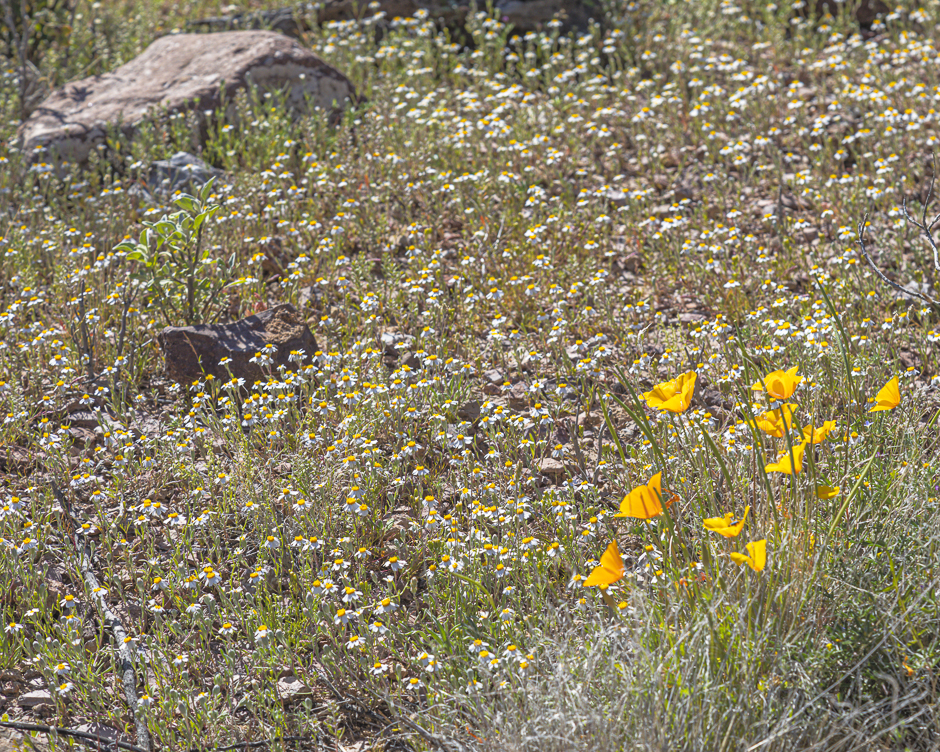
As we crested a hill, I was gobsmacked by this view of the enormous Estes Canyon. It creates a gap in the mountains in the southeast direction, the Milky Way’s location in the sky at this time of the year. Furthermore, the canyon walls are a natural frame, creating an excellent vantage point for photographing the Milky Way.
There are two small towns behind the mountain on the right, the border crossing at Lukeville, AZ and Sonoyta, Sonora. We hope to better understand the influence of light from these communities at this location before we get committed to photographing the Milky Way there. Hopefully the mountain will serve as a shield.
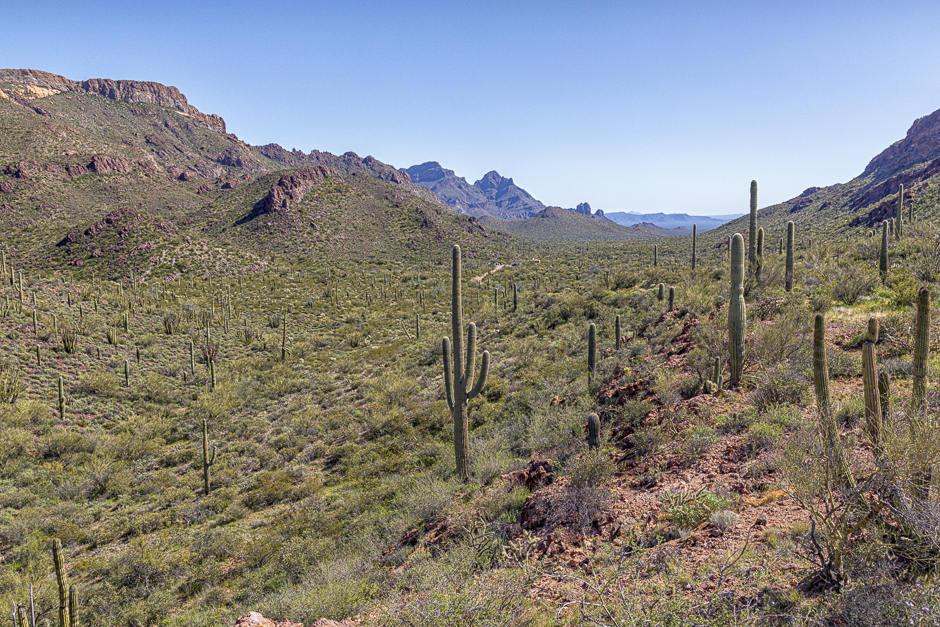
My last picture for today’s post is a striking, natural flower garden we encountered as we approached the end of our circuit on the east side of the park. A fine way to conclude the day’s shooting.
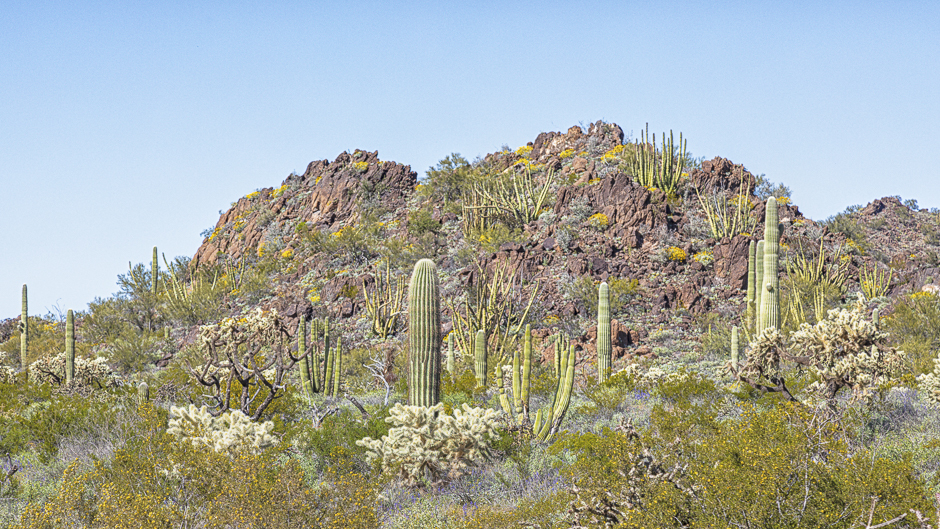

Hi Peter:
As usual, I really enjoy receiving your great photos of your field trips. The black & white photo is outstanding and the yellow poppies. It looks like the perfect day was had with you and Barry. Thanks for sharing.
Karey
Hi to Rolande